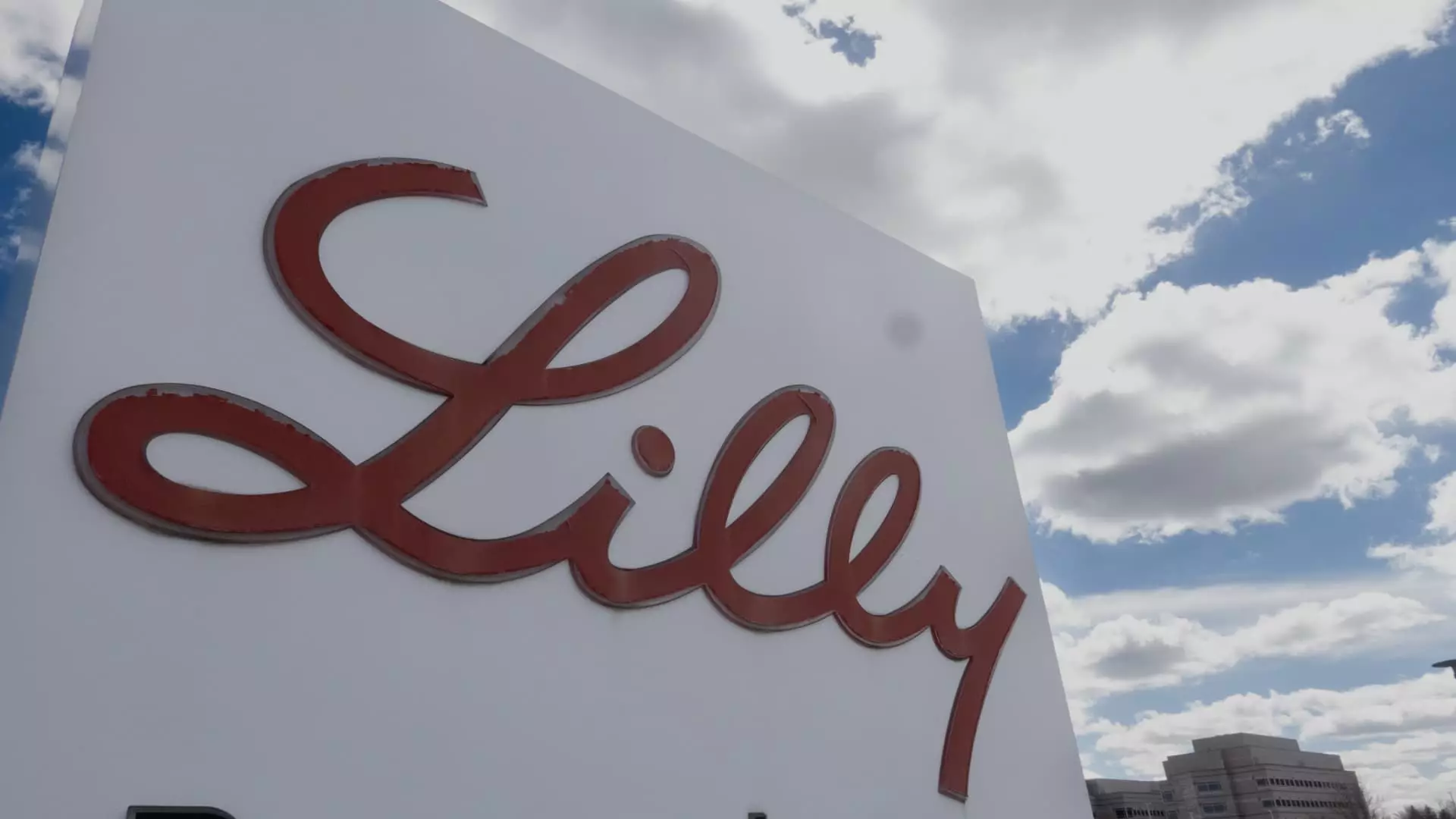In a landmark announcement made on Wednesday, pharmaceutical giant Eli Lilly revealed a substantial investment of at least $27 billion aimed at constructing four new manufacturing facilities across the United States. This move is a direct response to the soaring demand for its prominent injections that assist in weight loss and diabetes management, particularly its groundbreaking drugs Zepbound and Mounjaro. Furthermore, it signals a strategic pivot toward diversifying its product lineup beyond these successful treatments.
The announcement was made amid a political backdrop marked by heightened emphasis on reshoring manufacturing and reducing dependence on international supply chains—initiatives strongly backed by former President Donald Trump. Eli Lilly’s commitment is not merely a reaction to market dynamics but also a conscious effort to position itself as a leader in the pharmaceutical sector while aligning with governmental priorities. With total U.S. investments exceeding $50 billion in recent years, this latest initiative underscores the company’s dedication to bolstering domestic manufacturing capabilities.
Out of the projected $27 billion, a significant portion—approximately $23 billion—has already been funneled into expanding existing plants and establishing new facilities since 2020. These investments are crucial not only for meeting the burgeoning demand for popular drugs but also for mitigating supply shortages that have plagued the market. The decision to invest significantly in active ingredient manufacturing aligns with industry forecasts indicating a promising future for the global obesity drug market, projected to exceed $150 billion annually by the early 2030s.
Three of the newly announced manufacturing sites will focus on producing active ingredients for Eli Lilly’s medications, particularly tirzepatide, which is pivotal for its obesity and diabetes treatments. The fourth site aims to enhance the company’s global production capabilities for emerging injectable therapies, illustrating Eli Lilly’s forward-looking approach. However, the company’s vision reaches beyond its current successful products, as Eli Lilly seeks to expand its therapeutic reach into oncology, immunology, and neuroscience.
Eli Lilly CEO David Ricks emphasized the company’s optimistic outlook regarding its diverse pipeline, stating that this investment demonstrates a commitment to producing safe, high-quality medicines. This aspiration fits well within the broader context of the pharmaceutical industry’s growing inclination towards developing drugs that meet pressing health challenges, thus solidifying Eli Lilly’s position as a key player in diverse therapeutic areas.
The focus on expanding production capacity is particularly pertinent in light of recent supply shortages of Zepbound and Mounjaro, which have compelled patients to seek out unapproved versions of the drugs. Eli Lilly’s dedicated efforts to ramp up supply are aimed at ensuring patients have access to the genuine branded treatments they need, rather than resorting to potentially unsafe alternatives. As the FDA has now declared the shortage of tirzepatide over, it effectively curtails the production of these unregulated copycat products, thereby enhancing patient safety and access to FDA-approved medications.
Moreover, Eli Lilly’s investment is poised to create job opportunities—not just within the company but also during the construction phase of these manufacturing sites. Estimates suggest that more than 3,000 engineering and scientific jobs will be generated, along with an additional 10,000 construction jobs. This infusion of employment opportunities aligns with the national agenda to bolster domestic job markets and enhance the economy.
Ricks also acknowledged the significant impact of the Tax Cuts and Jobs Act of 2017, referencing the legislative environment that has helped fuel Eli Lilly’s manufacturing ambitions. This tax reform, characterized as a pivotal factor in shaping the company’s investment strategy, has provided the necessary financial flexibility to support expansive growth and job creation. As key provisions of this law face expiration by the end of the year, there are concerns about maintaining the momentum that this legislation has generated for companies like Eli Lilly.
Eli Lilly’s announcement of significant investments in U.S. manufacturing is a multifaceted strategy that encompasses heightened supply capabilities, commitment to innovation, and alignment with political expectations. As the pharmaceutical landscape evolves, the company stands at the forefront of addressing critical health needs while simultaneously contributing to national economic goals. This ambitious investment not only secures Eli Lilly’s position in the competitive market but also paves the way for advancing healthcare outcomes in the years to come.

